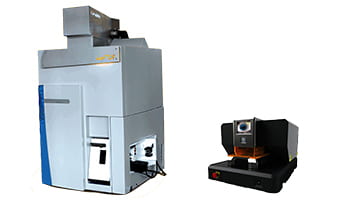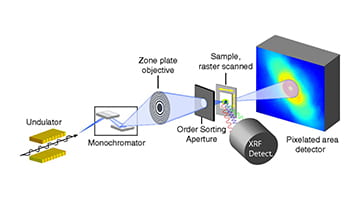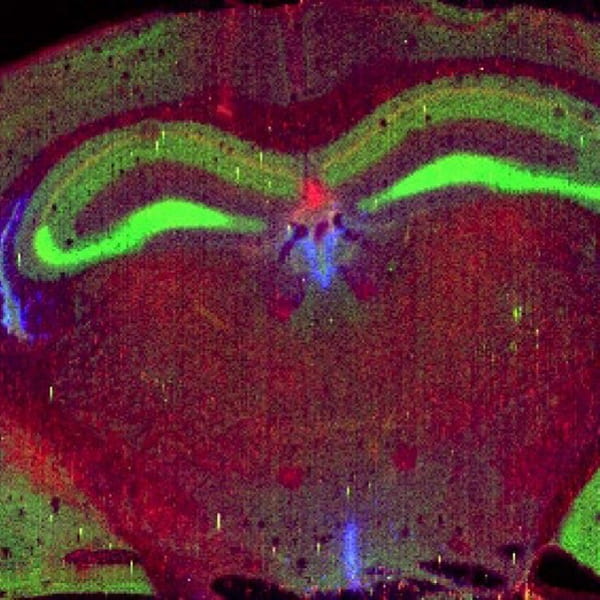Exploring the Interface between Metals and Life.
Our goal is to develop novel analytical and imaging technologies that enable biomedical research teams to image changes in metal localization in a quantitative manner from the cellular level to tissue and whole animal levels. The Quantitative Elemental Mapping for the Life Sciences will integrate multiple technologies to create transformative approaches to answer compelling biological questions about the functions of metals and other essential elements in health and disease.
Technology Research and Development Projects

LA-ICP-TOFMS
Laser Ablation Inductively Coupled Plasma Mass Spectrometry (LA-ICP-MS) is being used to develop multi-element 2D and 3D images of singe cell and tissues. LA-ICP-MS provides many beneficial capabilities including low detection limits (µg g-1), full elemental mass spectrum coverage, high spatial resolution, limited sample preparation, wide linear dynamic range, and ability to analyze whole tissue sections relatively rapidly (minutes to hours). Lean more about the advancements we are making.

SXFM
Scanning x-ray fluorescence microscopy (SXFM) provides capabilities that include the potential for 10nm resolution, 3D imaging, whole cell and tissue capabilities while also providing high sensitivity. Learn more about improvements to sampling handling methods including the integration of SXFM samples with LA-ICP-MS and improvements to the speed and cost effectiveness of image alignment, reconstruction, and quantitation methods.

PAM
Photoacoustic Microscopy (PAM) is only technology available that can image intrinsic optical absorption in three dimensions with a high spatial resolution. The system being developed will allow imaging of both frozen and live tissues with simultaneous data acquisition from PAM and confocal microcopy and the development of dyes that undergo chromophoric changes upon metal binding.
Technology Contacts

Thomas V. O'Halloran
High Throughput ICP-MS Lead
ohalloran-ofc@northwestern.edu

Chris Jacobsen
SXRF Cryo-Imaging Lead
c-jacobsen@northwestern.edu

Hao F. Zhang
Photoacoustic Imaging Co-Lead
hfzhang@northwestern.edu

Cheng Sun
Photoacoustic Imaging Co-Lead
c-sun@northwestern.edu
REACH OUT TO US
Learn about our technology, projects, and services by reaching out to us through this form. Your request will be redirected to the most appropriate person.
“Metal fluctuations play a critical regulatory role in a large number of biological processes. For example, fluctuations in the availability of zinc or copper can often be a trigger to the cell to change its function or developmental stage. A fluctuation in zinc might signal an egg to ovulate, or a second sperm, not to enter the egg. Too much manganese in the brain can trigger Parkinson’s disease. Pathological iron chemistry in the brain is involved in Alzheimer’s disease, and so on. These findings have generated a tremendous amount of interest across the fields of medicine, biology and physiology.”
Thomas V. O’Halloran, Director of the Quantitative Elemental Mapping for Life Sciences Resource




